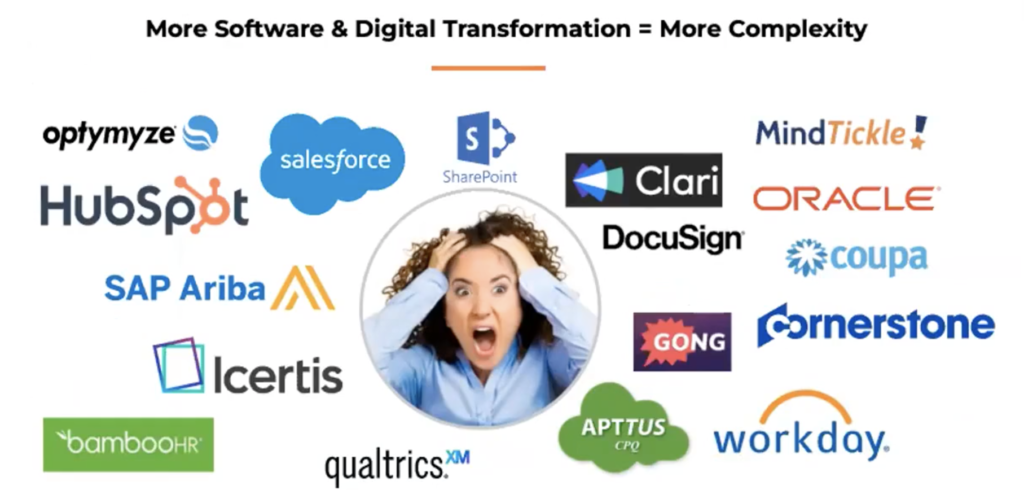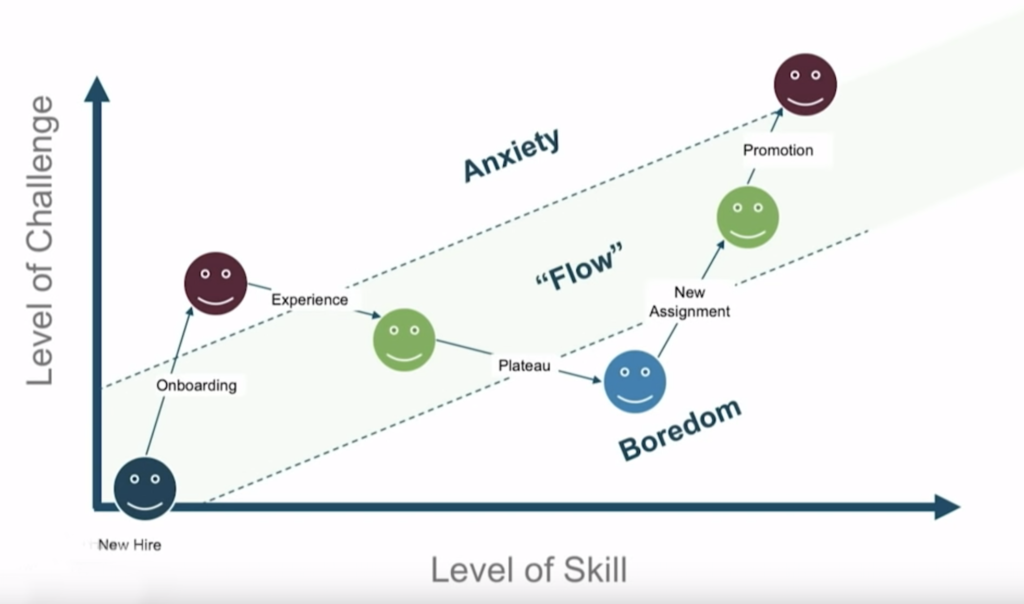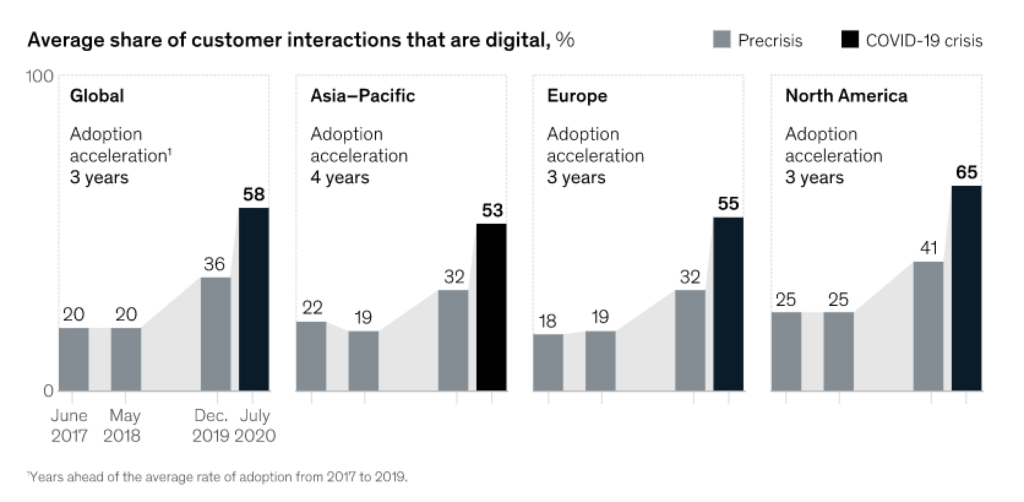Amy Titus from Deloitte and Jesse Jackson from JP Morgan share their views on the past, present, and future of digital adoption with Vispi Daver, Whatfix. The panel discusses the profound questions that arise from today’s world, as well as tactics, hints, and hacks to develop a great learning culture with technology.
Digital adoption is a technology that sits as an overlay on top of the software applications and the technologies that accompany either purchasing or building. And it’s fully integrated with the program, leading users through the software applications with real-time training instructions, nudges, productivity recommendations, and feedback as an overlay. There are approximately 900 software technologies in a typical workplace, over 300 Software as Service Cloud products, and on average, an individual must acquire and master 14 distinct technologies during onboarding in order to be successful

The capability to have so many materials and applications can make it difficult for employees around the world to navigate any business. An important parameter to look up here is, how do we make sure we’re offering an employee or client-centric experience? We use some of the industry giants like Apple, Netflix, and Amazon as a benchmark or a standard, comparing ourselves to the best in breed, not only those experiences that we may deliver within our specific organizations but genuinely comparing ourselves to the best in the industry. Our user interfaces are comparable to those that are intuitive or simple in many circumstances. But, at the same time as providing significant value to the organization. UX is like a joke if you have to explain it. And our ability to ensure that we are genuinely myopic, and know how to make aspects smooth, how to remove friction, really helps empower our organizations, for both our people and our consumers.
Here is where learning while working comes into play. You can learn as you work. By achieving this, the employee’s experience, as well as the experience of the client who is attempting to access what you offer and encountering all of these obstacles, is a part of this entire process.

We’re on the verge of a new learning disruption where we can’t separate learning from technology and say, “OK, learning is different from technology.” However, we combine them and that’s the way we’re looking at it. Since many of us work in a hybrid environment, this poses a new challenge in dealing with various technology options. Some require you to do one thing, while others require you to click, input a code, and then do something else. And no employee wants to rely on someone with a stronger recall memory all of the time. Learning in the flow of work is a new way of looking at it and pushing the boundaries of how we can assist people to learn just by stepping in and utilizing the program whenever needed.
When people look for a new job, and when the market is very active, they are looking for a kind of experience, for an organization that is simple to understand, access, and apply to, and they know that they will be continuously developed and that it is built into the DNA of the company. When we speak about the digital adoption platform, it is partly about their experiences with it.
High-performing organizations are ones where this is just a part of what they do. It’s not like they say, “Okay, from 9 to 5, an employee be working, then from 8:30 to 9, and from 5 to 530, he/she will be learning.” That is not the case. There will be occasions when learning specific capabilities will be highly purposeful and intentional.
But, how do you approach, discuss, and deal with problems or obstacles when you and your team are resilient? When you speak about access to using technology, there’s a lot of curation that organizations are trying to bring in so that as you learn, it’s easy for you to go out and get what you need, whether you’re an individual or a group.

Understanding the ecosystem of the organization, as well as what the client wants, and how both operate together, is critical right now for those in the learning industry and learning space. How do you combine technology and learning to make it simple for an adult? It’s difficult. Remember, as you constantly say, it was always tougher to write a one-page paper than a 20-page paper in school. People must unlearn old habits and learn new ones. So these are all the difficulties that come with digitization and digital adoption.
IRS has passed a law to take the consumer experience into account and that necessitates a whole new method of learning for employees to understand what it means when they don’t complete a task. Reportedly, state and local governments, who were likely early adopters in general, and the federal government, which arrived later but were still highly interested in digital adoption.
It’s no surprise that knowledge gets lost quickly with lots of activities happening. But I believe that low adoption is exactly what organizations attempting to address since it indicates that there’s a roadblock in the way. Also, employee acceptance of learning materials is minimal. Employees, on the other hand, must learn how to go through a transition, a digital transformation, and how to execute their work differently while also utilizing technology. Practice makes perfect. The problem is that learning by doing might be tedious if you don’t have some assistance, such as a digital adoption platform.
Jesse is the Chief Learning Officer in charge of managing, directing, and strategizing the training functions for community and retail banking. More than 120 000 bank workers are supported by this geographically dispersed, high-impact learning company, which also creates learning materials for key vendors.
He joined the company more than 25 years ago through the management development programme after serving five years on active duty in the US Navy. Jesse has also held a number of managerial positions at the national level, including Client Service Executive for Business Banking and Commercial Banking.
Copyright © 2025 Whatfix. All rights reserved
This website is owned and operated by Whatfix Private Limited (Formerly known as Quicko Technosoft Labs Private Limited)